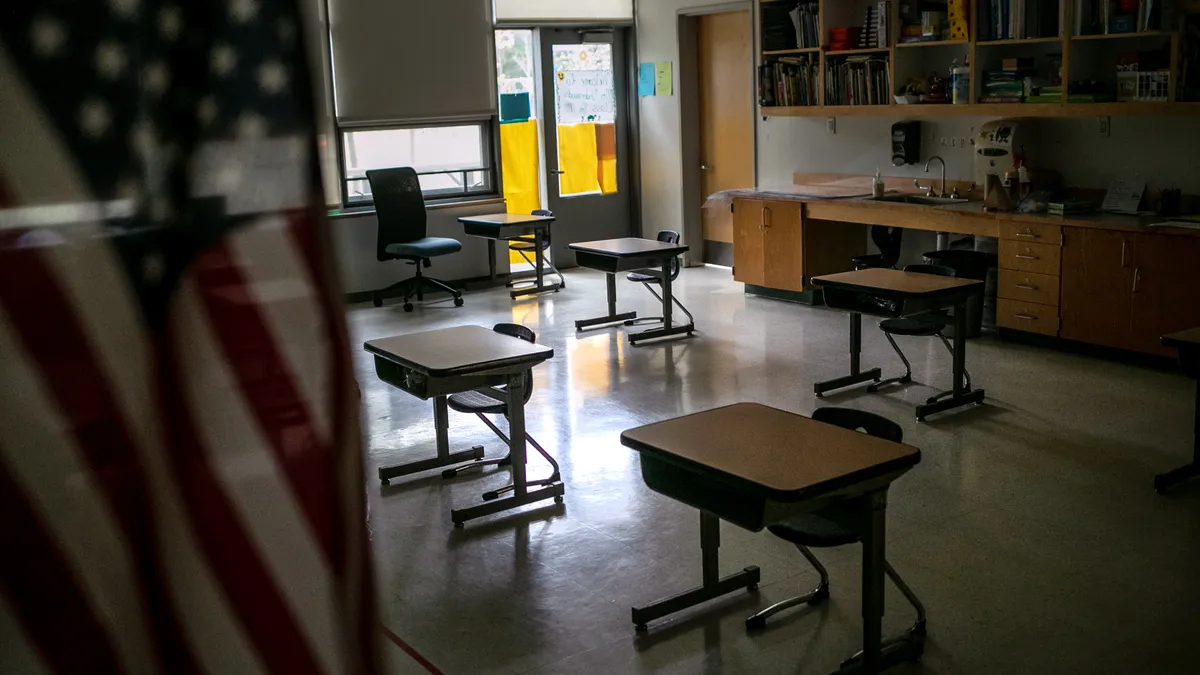Dive Brief:
- School administrators and policymakers should consider how pandemic-era K-12 trends, such as the expansion of online learning and access to free meals at schools, impact district budgets that factor student counts into revenue calculations, recommends a new report from the Education Commission of the States.
- Changes to student count policies in reaction to the pandemic, for example, may lead to advantages or challenges in funding calculations. The increase in free meal programs at schools, for instance, has led some states to explore other ways to collect population data about students from low-income backgrounds.
- Preventing negative funding effects by having accurate student count data will help states maximize the funding allocated to districts and potentially avert a fiscal cliff once federal pandemic relief funding fades away, according to the report.
Dive Insight:
Due to each state's unique populations and demographics, there's not one ideal national funding formula model. While state education funding formulas can be complex, the various ways states count students — either through attendance or enrollment — can play a big role in funding allocations.
"In many states, we see that the amount of students you have in your classroom directly translates to the loss or gain of tens of thousands of dollars," said Eric Syverson, co-author of the report and a policy analyst at ECS.
Student count policies are important because "that is really the starting point for how states allocate resources to districts and charter schools," said Chris Duncombe, co-author of the report and senior policy analyst at ECS.
Additionally, knowing how current educational trends may influence allocations based on traditional student counts can help school leaders and policymakers plan better for per-pupil funding now and later, the report recommends.
The ECS report focused on four emerging trends and the impact they may have on student count policies:
- Online instruction. The early pandemic school closures and lingering interest for virtual learning options have led some states to set policies around how online instruction affects student counts and funding.
Legislation in Indiana, for example, clarified that students counted as virtual pupils had to receive at least 50% of their instruction virtually. The ECS report said this is an important distinction because virtual students receive 85% of the foundation amount that in-person students receive.
As online learning programs grow, it will be critical for education stakeholders to consider student counts related to virtual instructional models and how that may impact allocations, the report advised.
- COVID-19 hold harmless policies. Several states were quick to avoid financial harm to districts for low or changing student attendance due to school closures, virtual learning and illnesses during the pandemic. Most of those hold harmless policies end this school year or next. A few states are extending temporary policies through the 2023-24 school year.
Although these policies helped districts from losing funding during the public health crisis, one drawback researchers note is the potential for budget cuts in areas where attendance remains low when federal aid subsides.
- Universal free meals. Traditionally, schools used participation in free and reduced-priced meals to account for the population of students from low-income backgrounds. With the expansion of free meal programs during the pandemic, however, some states are transitioning to new measurements of student poverty.
Maryland, for example, uses both direct certification in federal benefit programs and a supplemental income form provided to families to determine the number of students from low-income backgrounds in schools that participate in the Community Eligibility Provision that provides school reimbursements for free meals.
The report also highlighted another trend education stakeholders should be aware of in certain areas: districts experiencing growth in student enrollments. Specifically, the 2020 census found Southern and Western states to be growing at faster rates than elsewhere.
A law in Utah created the Enrollment Growth Contingency Program, which requires the state to provide districts experiencing student enrollment growth compared to the previous year with additional weighted pupil units prior to the enrollment count













